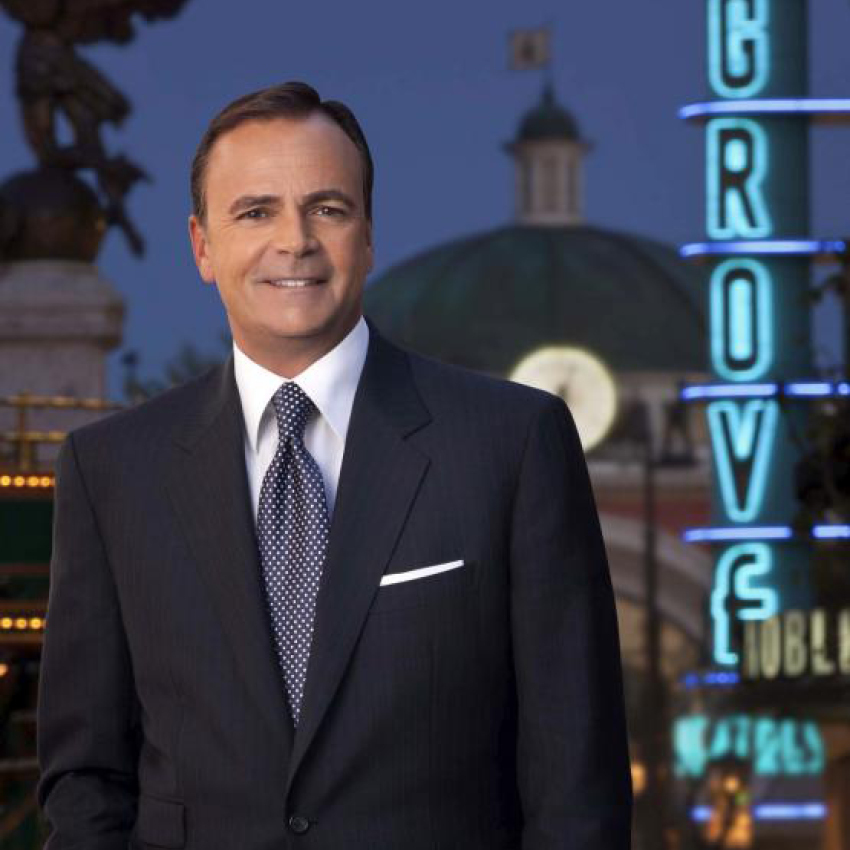As the world begins to open up from the pandemic shutdowns, malls across the country are feeling the love. In March, mall visits jumped 44 percent ahead of February, according to Placer.ai, based upon visit data tracked across 50+ malls in the U.S. in both urban and suburban centers.
While April visits held just about level with March, they advanced another 14 percent in May. Throughout the first five months of 2021, the mall traffic remains under 2019 levels, but the gap has continued to shrink.
Déjà Vu
Over the next months, we can expect mall visits to keep on an upward trajectory as more people get vaccinated and feel comfortable doing the things they couldn’t or were afraid to do during the pandemic. For a while, at least, malls will become a primary destination for people looking to escape from home for a shopping and entertainment fix. But the mall experience that will at first seem new is going to quickly become old again. In short order, people are going to grow tired of visiting them.
Despite the recent boost of energy that the reopenings have given malls in particular and brick-and-mortar retailers in general, consumer shopping patterns are going to revert back to a new normal with ecommerce pulling more and more dollars out of physical retail.
Online as the New Normal
Ecommerce retail, with its permutations including buy-online-pickup-in-store and at-home delivery, especially for restaurants, has met consumers’ demand for getting the things they needed throughout the pandemic. However, what still remains to be satisfied is consumers’ demand for things to do outside of their homes.
Retail According to a Visionary
Contemplating the opportunities and challenges malls face in the post-pandemic world, I eagerly listened to the recent CEO Series hosted by Robin Lewis with Rick Caruso. Caruso doesn’t grant many interviews – thus the honorific title of “mall whisperer,” who has a gift for making a shopping center experience worth having, His projects speak for themselves: The Grove at Farmer’s Market in Los Angeles, Americana at Brand in Glendale and The Palisades Village in Pacific Palisades, CA. But his perspectives and insights in that interview are relevant not just to mall operators but all retailers, no matter how large or small.
By way of introduction, Lewis reflected upon Caruso’s prescient 2014 keynote presentation at the National Retail Federation Big Show. In that talk, Caruso predicted the dismal future of suburban malls: “In 10 to 15 years, unless completely reinvented, malls will be a historical anachronism, a 60-year-old aberration that no longer meets the public’s needs, the retailers’ needs or the communities’ needs.”
But it’s not just malls that are caught in a time warp, it’s all kinds of retailers in all kinds of places. As a result, brick-and-mortar retail is losing market share as digital races ahead.
Radical Shifts
Ecommerce is expected to grow 18 percent this year and remains on track to capture 20 percent of retail market share by 2024. The 80/20 rule, also called the Pareto Principle, states 80 percent of outcomes (outputs) come from 20 percent of causes (inputs). In other words, the 20 percent of retail that ecommerce will soon represent will be the most valuable, most profitable and most productive compared to the other 80 percent of in-store sales.
The need for stores – any stores – will continue to diminish unless something radically different is done to make physical stores and malls a place that people want to go. That’s something that Rick Caruso has thought lots about and planned for in his ten flagship mall properties. They are places that people visit three times more often, spend two times more money in and they stay two times longer visiting, compared with other traditional malls.
Here are Caruso’s guiding principles for retailers and their mall partners to become places where people want to go in the new post-pandemic world we all live in.
-
Community Before Commerce
People crave connection. It’s a basic human need. Ever since time began, people got together not just to trade for things they couldn’t make themselves but also to spend time together. The shared experiences, perhaps as important as the sharing of material goods, created marketplaces. Ecommerce only provides transactional experiences, not community.
“People have been going to the market and feeling its energy for thousands of years,” Caruso explains. That energy and excitement are what people need most, not just now after being holed up at home, but as a result of our 21st century lifestyles. Today nearly 30 percent of Americans live alone, up from 13 percent in 1960. And even those who don’t live solo find their quality time spent with other people diminished by work and the time spent alone interacting with technology.
“There’s these common traits that we all have as humans: connecting, happiness, and the feeling of community,” he declared. He has designed his centers to provide kinship. “I wanted to build projects where that was the core, with dining and shopping as ancillary to just coming and enjoying time with your family and friends.”
The concept of social commerce takes on a whole new meaning when viewed from the human dimension, not through a technology lens. “It all starts with, and gets driven by, the community that we serve around us,” Caruso continues.
Every retailer, mall or shopping owner needs to ground the selection of their product and service offerings around the local community’s needs. As much lip service as big national chains give to localized selection, most chain stores look pretty much alike. And for malls, it’s the same.
Starting with the local community and building out from there brings greater diversity, rather than so much uniformity to the retail experience. “Once we have those building blocks in the community, then we start layering in the type of retail that we believe is the most relevant and the most forward-thinking. What we always want is to have a mix, because we believe we are building the centers of town and centers of town have a lot of variety,” he shares.
-
Make Your Own Rules, Break the Established Ones
Caruso is the first to admit that as a real estate developer he didn’t know anything about retail. But he knew what he liked when he shopped and used that as his north star to develop the kind of places he would want to spend time in.
”I love real estate and I love building things,” he explains. “I started out buying an industrial building and I just didn’t get very excited about it. I didn’t see any people, so I quickly pivoted to retail. I really had no idea of what the rules were and that was one of the greatest benefits to me.”
If he had known the mall developer rules, he wouldn’t have designed centers as groundbreaking as he did. For example, mall developers emphasize their parking lots and aim to move people in and out as quickly as possible. Caruso, on the other hand, aimed to increase “dwell time,” so that people would spend as much time at the centers as possible.
As a result, Caruso uses a different metric than market share to measure the success of his centers. He says market share grows as a direct result of heart share, which is the passion people feel for visiting his centers. And heart share is more than just customer loyalty. It is customer passion and that is what he designs his centers to inspire.
“We don\’t design our properties for people to shop – never have – but for people to enjoy,” he explained in his NRF keynote. “And when they feel good, they shop and they spend more. The reason these places work is simple. They mimic the natural habits of human behavior. We try to put people into social settings that are organic. When you combine that extraordinary setting, with remarkable merchants, magic is created. I think the rebirth of retail will come as developers, retailers, public and city officials see that the future [of retail] is based on something very old and very enduring.”
-
Let the Consumer Guide You
Mall developers and their retail partners need to be guided by bigger ideas than just rent or sales per square-foot. Caruso encourages everyone to think bigger – much bigger – about how they can enrich people’s lives. They have to stop watching what the mall in the next town or the retailer next door is doing and pay attention to the people who come inside your door.
“In terms of the whole industry, you have an archaic set of rules and operations that don’t meet the needs of people,” Caruso shares. “For people in this industry, I encourage them and the owners of malls, just to break the rules and follow the consumer and you will find a path of great reward.”
He speaks of aligning retail with the “human algorithm” which will never lead you wrong. With the human algorithm as guide, “We can predict what all of us want in the future,” he says. “We have to have the ability and the strength and the courage to continue to challenge people to think outside of the box, to really push the thinking on.”
Get Ready for the Great Retail Reset
Until last year, the digital shopping revolution was the greatest disruption to retail’s business-as-usual model. Even as ecommerce upset the natural order of things in retail and rocked the boat, it didn’t capsize it. That came with the pandemic. Many retailers rose to that immediate challenge, working around store closures, pivoting to online sales and streamlining operations for greater efficiency. But the changes the pandemic brought challenges retailers to continue their evolution to meet new needs as consumers’ values have shifted.
“With respect to all the tragedy and all the struggle and all the terrible things that happened, it was also the biggest reset button in the history of mankind,” Caruso believes. “Every business has to reevaluate their business model as every human being had to reevaluate their values and priorities. We are in the midst of the great human reconnection.”
He challenges all to find a better formula for success. “You have to be innovative. Yes, break the rules or maybe don’t even learn the rules. Follow your instincts, follow your intuition. Watch people, be a student of people because there are basic things as human beings that have never changed. Human beings want comfort. They want safety. They want connection. They want joy in their lives. In whatever business model you provide, whether its serving coffee or opening retail centers, if you connect with that human being in a genuine way, you’ll have a successful business.”




